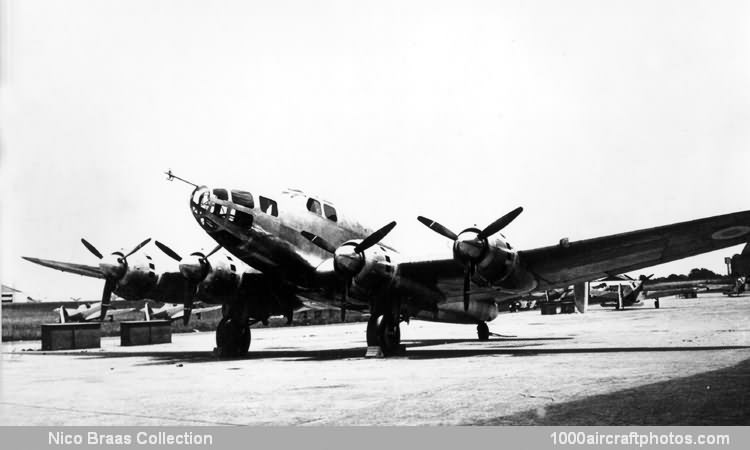The Société Nationale de Constructions Aéronautiques du Sud-Ouest (SNCASO) at Courbevoie took medium bomber design an interesting stage further with the Bloch 135 B4 which mounted no fewer than four engines, and thus, when flown on January 12, 1939, this warplane was unique among medium bombers. Although widely believed to be a scaled-down derivative of the Bloch 162 B5 heavy bomber, the Bloch 135 bore no design relationship to the larger aircraft, being a parallel development to the twin-engined Bloch 134 B4 and meeting essentially similar requirements.
When, early in 1937, the former Bloch team at Courbevoie began working on a twin-engined medium bomber to fulfill the demands of the A 21 program, a four-engined version of the same basic design was evolved in parallel, the principal difference between the two aircraft being the wing center section, that of the Bloch 134 carrying two Gnome & Rhône 14P radials and that of the Bloch 135 carrying four 660 hp Gnome & Rhône 14M 6/7 fourteen-cylinder radial air-cooled engines.
When the decision was taken to abandon the original Bloch 134 design in favor of a completely new development, work on the Bloch 135 continued, and thus there was to be little in common between this and the twin-engined bomber designated Bloch 134. The Bloch 135 defensive armament consisted of one 0.3 in (7.5 mm) MAC 1934 machine gun each in the nose and the ventral position, and one 0.787 in (20 mm) Hispano-Suiza cannon in the dorsal position. In the internal bomb bay a load of 2,970 lb (1,347 kg) could be carried.
The Bloch 135 No. 01 was assembled at Villacoublay late in 1938, and flown there by the SNCASO Chief Test Pilot Le Bail on January 12, 1939. During the following month some modifications were made to the tail assembly, but although subsequent flight testing revealed an extremely promising performance and pleasant handling characteristics, no decision concerning production of the bomber had been taken by the time WW IIbegan. Subsequently, the Armée de l'Air decided that the twin-engined LeO 45 and Amiot 350 series of medium bombers fully met its immediate requirements, and the advantages of standardization motivated against introducing a third medium bomber onto the assembly lines."
Span: 69 ft 9.67 in (21.28 m)
Length: 50 ft 0.33 in (15.25 m)
Height: 12 ft 10 in (3.91 m)
Wing area: 652.292 sq.ft (60.6 sq.m)
Weight empty: 12,875 lb (5,840 kg)
Loaded weight: 21,903 lb (9,935 kg)
Max speed: 311 mph (500 kmh) at 16,404 ft (5,000 m)
Cruise speed: 264 mph (425 kmh) at 16,404 ft (5,000 m)
Service ceiling: 32,810 ft (10,000 m)
Climb: to 16,404 ft (5,000 m) 9.5 min
Range: 1,243 mls (2,000 km)
